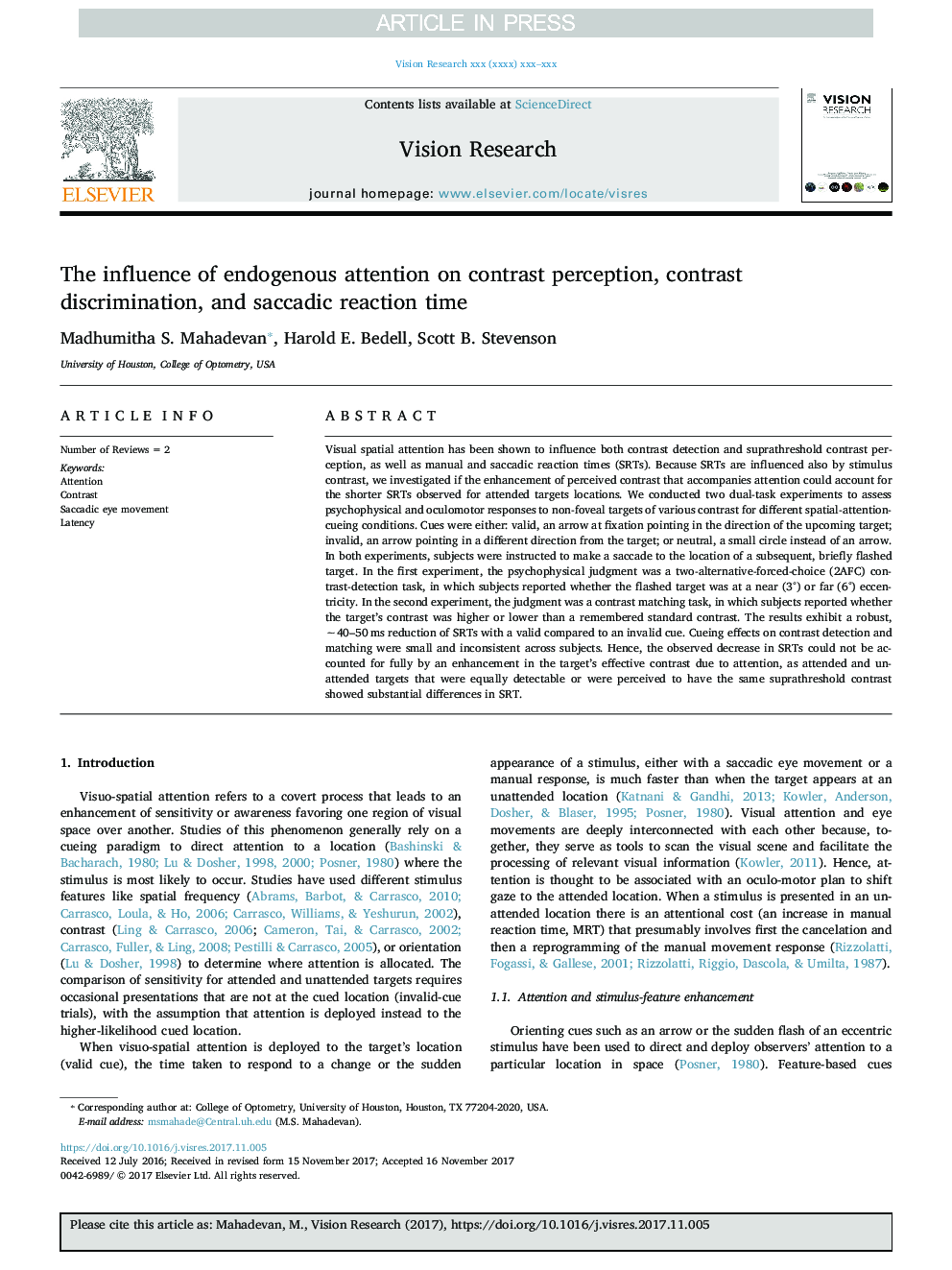| Article ID | Journal | Published Year | Pages | File Type |
|---|---|---|---|---|
| 8795331 | Vision Research | 2018 | 15 Pages |
Abstract
Visual spatial attention has been shown to influence both contrast detection and suprathreshold contrast perception, as well as manual and saccadic reaction times (SRTs). Because SRTs are influenced also by stimulus contrast, we investigated if the enhancement of perceived contrast that accompanies attention could account for the shorter SRTs observed for attended targets locations. We conducted two dual-task experiments to assess psychophysical and oculomotor responses to non-foveal targets of various contrast for different spatial-attention-cueing conditions. Cues were either: valid, an arrow at fixation pointing in the direction of the upcoming target; invalid, an arrow pointing in a different direction from the target; or neutral, a small circle instead of an arrow. In both experiments, subjects were instructed to make a saccade to the location of a subsequent, briefly flashed target. In the first experiment, the psychophysical judgment was a two-alternative-forced-choice (2AFC) contrast-detection task, in which subjects reported whether the flashed target was at a near (3°) or far (6°) eccentricity. In the second experiment, the judgment was a contrast matching task, in which subjects reported whether the target's contrast was higher or lower than a remembered standard contrast. The results exhibit a robust, â¼40-50â¯ms reduction of SRTs with a valid compared to an invalid cue. Cueing effects on contrast detection and matching were small and inconsistent across subjects. Hence, the observed decrease in SRTs could not be accounted for fully by an enhancement in the target's effective contrast due to attention, as attended and unattended targets that were equally detectable or were perceived to have the same suprathreshold contrast showed substantial differences in SRT.
Related Topics
Life Sciences
Neuroscience
Sensory Systems
Authors
Madhumitha S. Mahadevan, Harold E. Bedell, Scott B. Stevenson,
